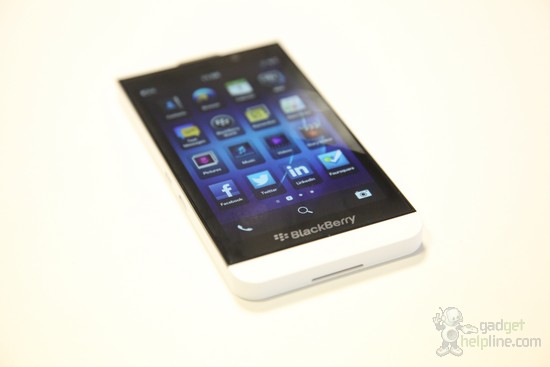The new BlackBerry Z10 is the thinnest BlackBerry to date, but how did its manufacturer make it so slim? At 9mm thick it might not be as thin as the iPhone 5 or some other smartphones on the market today, but the technology used in the latest BlackBerry is intriguing.
Some have been expressing disappointment at the Z10’s lack of Gorilla Glass to protect the screen. The phone does have a sheet of glass to protect that gorgeous 4.2-inch HD display, but details have been scant about exactly what materials are in use.
It turns out that the company opted to use an intriguing and fairly new process called Touch on Lens in order to make the Z10 as thin as possible. This manufacturing process involves doing away with the traditional touch panel, which usually sits between the screen itself and the glass that protects it and recognises your prods, flicks and swipes in order to control the phone.
Instead of using an entire panel to recognise touch, the touch sensors are applied directly to the back of the glass panel. A thin film of Indium Tin Oxide is applied to the underside of the glass in order to conduct touch, thus eliminating the need for a dedicated touch panel.
This allowed RIM to make the phone thinner than any BlackBerry before it, resulting in the slim Z10 we know today.
The process of Touch on Lens is carried out by a few manufacturers in the Far East, with display experts Wintek likely to be involved in the manufacturing of the Z10.
Whilst the Z10 might not be the thinnest phone available, the inclusion of Touch on Lens means that future BlackBerry 10 phones could be even thinner. We’d love to see a sub-7mm BlackBerry 10 phone, wouldn’t you?

